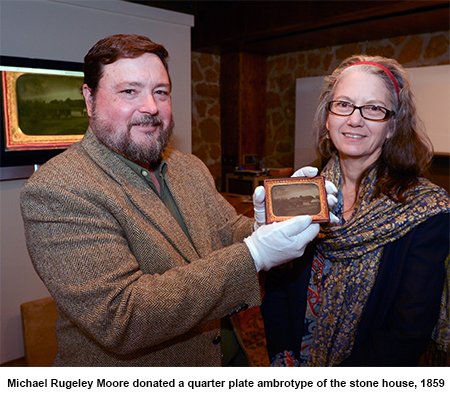Old Hat! 100 Years of Headgear
New additions to the collection will be featured in 2016 exhibits
 In 2016, Nacogdoches will mark its tricentennial year celebrating theregion’s Spanish heritage.The Stone Fort Museum’s exhibit El Camino Real de los Tejas and Building Nacogdoches highlights this rich history and will feature new additions to the museum’s collections including acquisitions from Louise Durst Lansford and Michael Rugeley Moore.
In 2016, Nacogdoches will mark its tricentennial year celebrating theregion’s Spanish heritage.The Stone Fort Museum’s exhibit El Camino Real de los Tejas and Building Nacogdoches highlights this rich history and will feature new additions to the museum’s collections including acquisitions from Louise Durst Lansford and Michael Rugeley Moore.
In December 2014, Louise Durst Lansford and her son, Robert Lansford, donated portraits, furniture and household items handed down through descendents of John M. Durst. Durst owned the stone house in the early 1800s, and for a short period, lived in the house with his wife, Harriet.
More recently, Michael Rugeley Moore donated a quarter plate ambrotype of the stone house. Images of the stone house built by Antonio Gil Y’Barbo are few, but the original ambrotype of the building is rare object. The quarter plate ambrotype depicting the stone house in downtown Nacogdoches was bequeathed to Mr. Moore’s grandmother, Helen Hoskins Rugeley, from her paternal grandmother, Augusta Raguet Hoskins.
The campus of Stephen F. Austin State University is home to a fort, and not just any fort. A fort that was a trading post, private home, church, jail, and saloon - but never a fort. A fort that was built three times, and a fort that was torn down by men to be re-erected by women. Read more about the history of the Stone Fort.